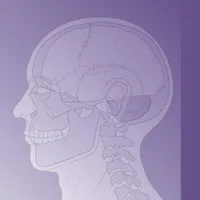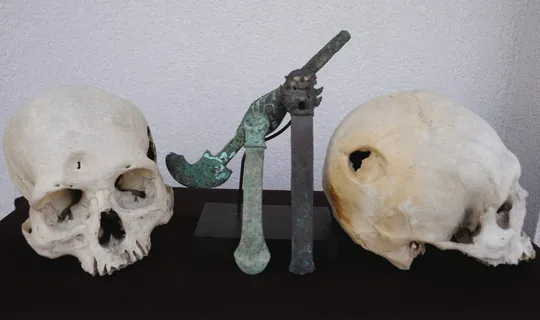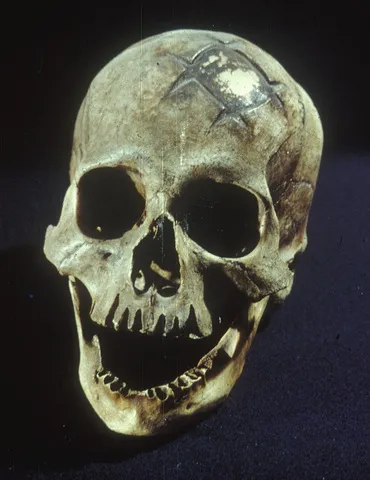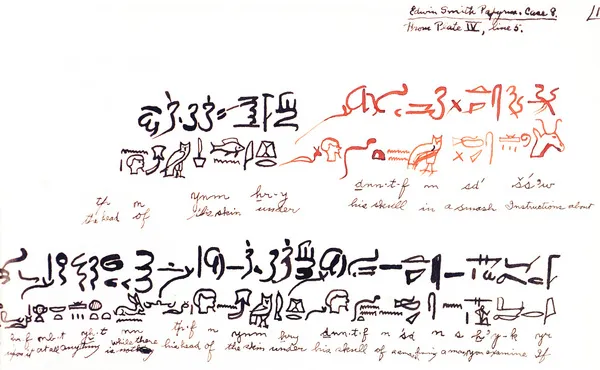
eBook - ePub
Principles of Neurological Surgery E-Book
Richard G. Ellenbogen, Laligam N Sekhar, Neil Kitchen
This is a test
Compartir libro
- 848 páginas
- English
- ePUB (apto para móviles)
- Disponible en iOS y Android
eBook - ePub
Principles of Neurological Surgery E-Book
Richard G. Ellenbogen, Laligam N Sekhar, Neil Kitchen
Detalles del libro
Vista previa del libro
Índice
Citas
Información del libro
Perfect for anyone considering or training in this challenging specialty, Principles of Neurological Surgery, 4th Edition, by Drs. Richard G. Ellenbogen, Laligam N. Sekhar, and Neil Kitchen, provides a clear, superbly illustrated introduction to all aspects of neurosurgery –from general principles to specific techniques. Thorough updates from leading authors ensure that you'll stay abreast of the latest advances in every area of neurosurgery, including pre- and post-operative patient care, neuroradiology, pediatric neurosurgery, neurovascular surgery, trauma surgery, spine surgery, oncology, pituitary adenomas, cranial base neurosurgery, image-guided neurosurgery, treatment of pain, epilepsy surgery, and much more.
Preguntas frecuentes
¿Cómo cancelo mi suscripción?
¿Cómo descargo los libros?
Por el momento, todos nuestros libros ePub adaptables a dispositivos móviles se pueden descargar a través de la aplicación. La mayor parte de nuestros PDF también se puede descargar y ya estamos trabajando para que el resto también sea descargable. Obtén más información aquí.
¿En qué se diferencian los planes de precios?
Ambos planes te permiten acceder por completo a la biblioteca y a todas las funciones de Perlego. Las únicas diferencias son el precio y el período de suscripción: con el plan anual ahorrarás en torno a un 30 % en comparación con 12 meses de un plan mensual.
¿Qué es Perlego?
Somos un servicio de suscripción de libros de texto en línea que te permite acceder a toda una biblioteca en línea por menos de lo que cuesta un libro al mes. Con más de un millón de libros sobre más de 1000 categorías, ¡tenemos todo lo que necesitas! Obtén más información aquí.
¿Perlego ofrece la función de texto a voz?
Busca el símbolo de lectura en voz alta en tu próximo libro para ver si puedes escucharlo. La herramienta de lectura en voz alta lee el texto en voz alta por ti, resaltando el texto a medida que se lee. Puedes pausarla, acelerarla y ralentizarla. Obtén más información aquí.
¿Es Principles of Neurological Surgery E-Book un PDF/ePUB en línea?
Sí, puedes acceder a Principles of Neurological Surgery E-Book de Richard G. Ellenbogen, Laligam N Sekhar, Neil Kitchen en formato PDF o ePUB, así como a otros libros populares de Medicine y Neurosurgery. Tenemos más de un millón de libros disponibles en nuestro catálogo para que explores.
Información
Part 1
General Overview
1
Landmarks in the History of Neurosurgery
James Tait Goodrich
“If a physician makes a wound and cures a freeman, he shall receive ten pieces of silver, but only five if the patient is the son of a plebeian or two if he is a slave. However it is decreed that if a physician treats a patient with a metal knife for a severe wound and has caused the man to die—his hands shall be cut off.”
—Code of Hammurabi (1792–50 BC)

In the history of neurosurgery there have occurred a number of events and landmarks, and these will be the focus of this chapter. In understanding the history of our profession, perhaps the neurosurgeon will be able explore more carefully the subsequent chapters in this volume to avoid having his or her “hands cut off.”
To identify major trends and events in neurosurgery, this chapter has been organized into a series of rather arbitrary historical time periods. In each period the key themes, personalities, and neurosurgical techniques developed and used are discussed.
Prehistoric Period: the Development of Trephination
Neurosurgeons are often considered the second oldest profession, the first being prostitution. Early man (and woman) recognized that to take down a foe or an animal, a direct injury to the head was the quickest means. Having said that, prehistoric surgery, compared with its modern successor, lacked several essentials in its early development: an understanding of anatomy, recognition of the concept of disease, and comprehension of the origin of illness in an organic system. Failure to grasp these vital principles retarded the practice of both medicine and surgery. The “modern” art of surgery, and in particular that of neurosurgery, was not recognized as a discrete specialty until the early 20th century. Neurosurgeons have now advanced from mere “hole drillers” to sophisticated computer nerds running complex 21st-century stereotaxic frameless guided systems.
In many museum and academic collections around the world are examples of the earliest form of neurosurgery—skull trephination.1–4 A number of arguments and interpretations have been advanced by scholars as to the origin and surgical reasons for this early operation—to date no satisfactory answers have been found. Issues of religion, treatment of head injuries, release of demons, and treatment of headaches have all been offered. Unfortunately, no adequate archaeological materials have surfaced to provide us with an answer. In reviewing some of the early skulls, the skills of these early surgeons were quite remarkable. Many of the trephined skulls show evidence of healing, proving that these early patients survived the surgery. Fig. 1.1 shows examples of two early (Peru circa AD 800) skulls that have been trephined and show evidence of premorbid bone healing. In the Americas the tumi was the most common surgical instrument used to perform a trephination, and some examples of these tumis are shown in Fig. 1.1. Fig. 1.2 presents a fine example of a well-healed gold inlay cranioplasty done by an early South American surgeon.

Figure 1.1 Two Peruvian skulls that date from about AD 600 showing a well-healed occipital trephination (right skull) and a well-healed frontal trephination (left skull). Three typical bronze/copper “tumis” used to make the trephination are illustrated between the skulls. (From the author's collection.)

Figure 1.2 An early cranioplasty done with a gold inlay, which is well healed. (From the Museum of Gold, Lima, Peru.)
Included in many museum and private collections are examples of terra cotta and stone figures and other carvings that clearly depicted several common neurologic disorders. Commonly depicted by contemporary artisans were images of hydrocephalus, cranial deformation, spina bifida, and various forms of external injuries and scarring. We have added two examples from the Olmec and Mayan civilizations that demonstrate a young adult with achondroplasia and a young adult with severe kyphoscoliosis likely due to a myelomeningocele5 (Fig. 1.3).

Figure 1.3 (A) A Jadeite figure from the Olmec culture of Pre-Conquest Mexico dating from about 1500 BC showing a figure of an achondroplastic dwarf with likely arrested hydrocephalus. Individuals with some deformations such as achondroplasia were highly prized in the noble courts. (B) A west Mexico figure from the Pre-Conquest Nayarit area showing a severe kyphoscoliosis in a young adult with likely a primary problem of a myelomeningocele. (From the author's collection.)
Egyptian and Babylonian Medicine: Embryonic Period
The Egyptian period, covering some 30 successive dynasties, gave us the earliest known practicing physician: Imhotep (I-em-herep) (3000 BC). Imhotep (“he whom cometh in peace”) is considered the first medical demigod, one likely more skilled in magic and being a sage. From this period came three important medical and surgical documents that give us a contemporary view of the practice of surgery. These collections are the Ebers, Hearst, and Edwin Smith papyri, two of which are considered here.6,7
The Egyptians are well remembered for their skills developed in the practice of mummification. Historians have now shown that anatomic dissection was also performed in this period. An examination of the existing Egyptian papyri shows that the practice of medicine was based largely on magic and superstition. Therapeutic measures depended on simple principles, most of which allowed nature to provide restoration of health with little intervention. In treating skeletal injury, the Egyptians realized that immobilization was important and they prescribed splints for that purpose. Their materia medica was impressive, as their substantial pharmacopeias attest.
Written some 500 years after Hammurabi (1792–50 BC), and the oldest medical text believed to exist (including about 107 pages of hieratic writing), the Ebers papyrus is of interest for its discussion of contemporary surgical practice.7 The text discusses the removal of tumors and recommends surgical drainage of abscesses.
The Edwin Smith papyrus, written after 1700 BC, is considered to be the oldest book on surgery per se and is a papyrus scroll 15 feet in length and 1 foot in width (4.5 m by 0.3 m; Fig. 1.4).6 The text contains a total of 48 cases, including those with injuries involving the spine and cranium. Each case is considered with a diagnosis followed by a formulated prognosis. Owing to the scholarly work of James Breasted, this papyrus has been translated from the original Egyptian to English. The original document remains in the possession of the New York Academy of Medicine.6

Figure 1.4 A manuscript leaf from the Breasted translation of the Hearst papyrus discussing a head injury. (From Breasted JH. The Edwin Smith Papyrus. Published in Facsimile and Hieroglyphic Transliteration with Translation and Commentary. Chicago: University of Chicago Press; 1930; from the author's collection.)
Other than the isolated cases found in these papyrus fragments, little can be gleaned on the actual practice of neurosurgery. However, it is evident from these papyri that the Egyptian physician could classify a head and spine injury and would even elevate a skull fracture if necessary. The Edwin Smith papyrus (ca. 1700 BC) offers the first descriptions of the skull sutures, the presence of intracranial pulsations, and the presence of cerebrospinal fluid (CSF). The use of sutures in closing wounds and the applications of specifically designed head dressings for cranial injury appear here for the first time. The Egyptian physician's understanding of the consequences of a cervical spine injury is clear from case 31, in which the injured individual is described with quadriplegia, urinary incontinence, priapism, and ejaculation in a cervical spine subluxation. The understanding of head and spine injury was further developed in the Greek schools of medicine; here we see the first treatment principles being offered on the management and codification of head injury.
Greek and Early Byzantine Period: the Origins of Neurosurgery
The first formal development of neurosurgery occurred with the golden age of Greece. During the ancient period there were no surgeons who restricted themselves in stricto sensu to “neurosurgery.” Head injuries were plentiful then as the result of wars and internecine conflicts, as recorded by Herodotus and Thucydides as well as by Homer. The Greeks' love of gladiator sports also led to serious head injuries. So sports and war were then, as now, a principal source of material for the study and treatment of head injury.
The earliest medical writings from this period are those attributed to Hippocrates (460–370 BC), that most celebrated of the Asclepiadae, and his schools (Fig. 1.5).8 To Hippocrates we owe the description of a number of neurologic conditions, many of them resulting from battlefield and sport injuries. Hippocrates was the first to develop the concept that the location of the injury to the skull was important in any surgical decision. The vulnerability of the brain to injury was categorized from lesser to greater by location, with injury to the bregma rep...